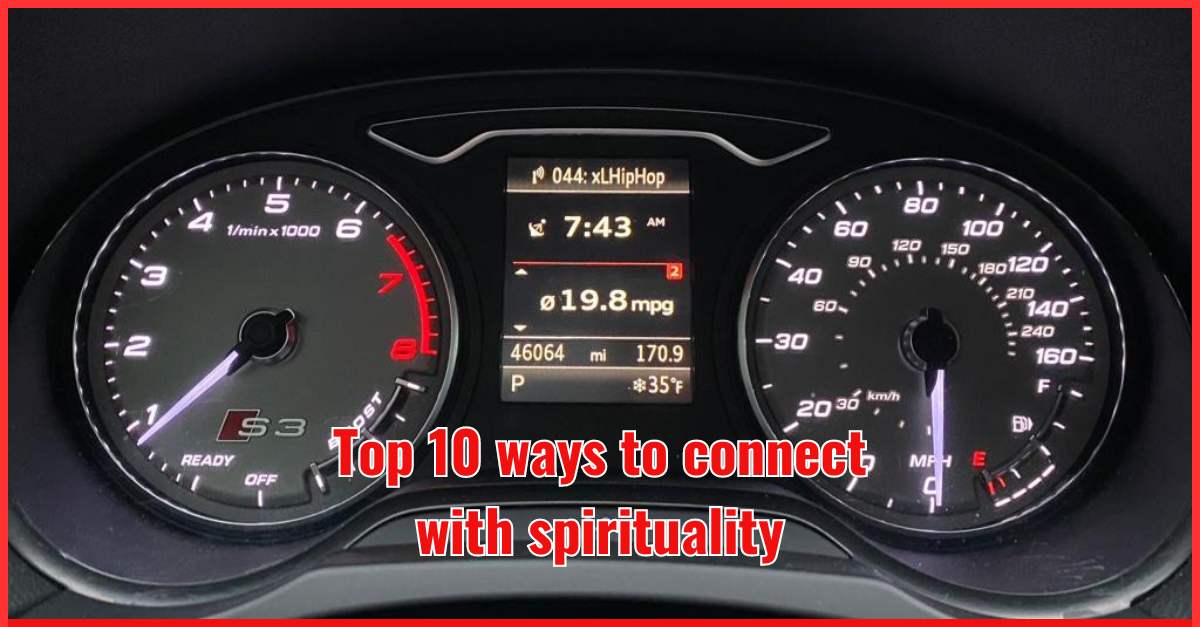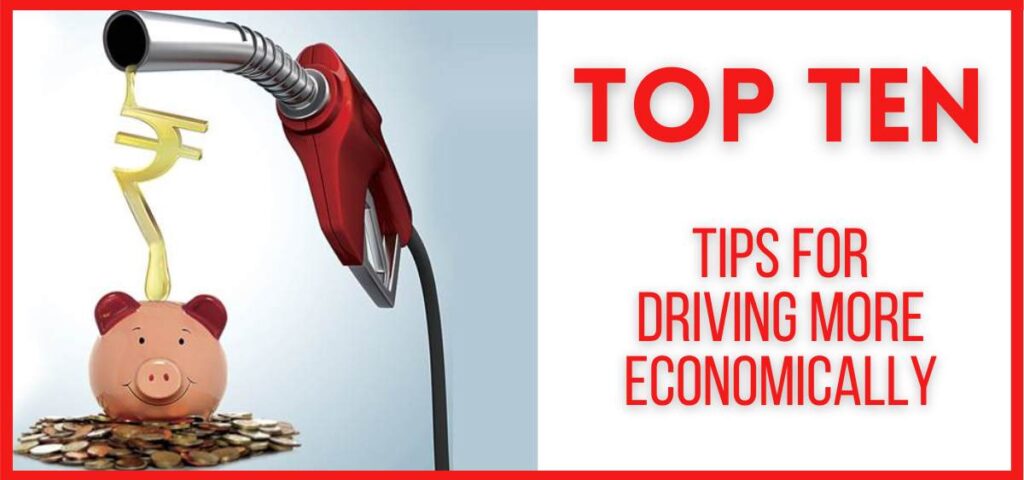Pump Up Your Savings: Top Ten Tips for Driving More Economically in 2025
Gas prices have been on everyone’s mind lately! Filling up your tank can feel like a constant budget battle. But before you trade in your car for a bicycle, there are ways to fight back. By making small changes to your driving habits and routine, you can squeeze more miles out of every gallon. This guide will unveil the top ten tips for driving more economically, helping you save money at the pump and put the brakes on rising fuel costs. Let’s get rolling!

1. Maintain your car properly
- Regular Maintenance is Key: Just like a well-oiled machine, a properly maintained car sips gas instead of guzzling it.
- Fresh engine oil reduces friction.
- Clean air filters improve airflow for efficient fuel burning.
- Properly inflated and aligned tires decrease rolling resistance.
- Regular servicing can extend the lifespan of your car and avoid costly repairs.
- Benefits Beyond Saving Money: A healthy engine runs cleaner, reducing emissions and potentially lasting longer.
- Investment in Savings: Routine maintenance pays off in fuel savings, a smoother ride, and avoiding future repair costs.
Also, read: Top 10 Reasons to Buy Hybrid Cars
2. Lighten up
Lighten Up: Your car isn’t just carrying you; it’s hauling everything extra you’ve accumulated.
- Declutter the trunk: Remove anything you don’t use regularly.
- Find alternative storage for bulky, occasional-use items.
- Ditch the roof rack when not in use.
- Every Pound Counts: Even small things add up.
- Minimize weight in the glove compartment.
- Keeping your car clean reduces overall weight.
Also, read: 10 things to consider when buying a hybrid car in 2024
3. Plan your trips
- Outsmart the Traffic: Use traffic apps to find the most fuel-efficient route, avoiding congestion and minimizing stop-and-go situations.
- Combine and Conquer: Group errands into single outings to avoid multiple short trips that guzzle gas.
- Plan the Perfect Route: Map a route that hits all your stops efficiently, eliminating backtracking.
- Time Travel for Savings: Run errands in off-peak hours to avoid rush hour traffic and save gas.
- Carpool Power: Consider carpooling for longer trips to split gas costs and reduce emissions.
- Weather or Not: Be flexible! Opt for alternative transportation, like biking for short trips on clear days.
4. Drive smoothly
- Drive Smoothly: Anticipate the road and avoid aggressive maneuvers like sudden stops, starts, and lane changes.
- Coast to a Stop: When approaching a yellow light, ease off the gas and coast gradually instead of slamming on the brakes.
- Gentle Acceleration: Avoid accelerating quickly from a standstill. Instead, build speed progressively for a smoother and more fuel-efficient start.
- Maintain Consistent Speed: Erratic speeding and slowing down waste fuel. Anticipate traffic flow and adjust your speed accordingly to maintain a smooth, steady pace.
- Think Ahead: By anticipating traffic, hills, and red lights, you can drive more efficiently and save gas.
Also, read: Top Ten things to do when your car battery dies
5. Use cruise control (when appropriate)
- Utilize cruise control strategically:
- Maintains steady speed on flat highways for optimal fuel economy.
- Reduces wasted fuel from constant acceleration and deceleration (especially in hills).
- May keep you at a slightly more fuel-efficient speed than manual driving.
- Cruise control limitations:
- Not ideal for stop-and-go traffic or curvy roads.
- Manual control allows quicker reactions and adjustments in those situations.
- Key takeaway: Maintain a steady pace for best results.
- Disengage cruise control on uneven terrain requiring frequent braking.
- Enjoy the benefits: Activate cruise control on open highways for a smooth ride and potentially better gas mileage (while following speed limits!).
Also, read: Top Ten Battery Technologies That Will Revolutionize the Automotive Industry
6. Avoid idling
- Stop Idling! It wastes gas and pollutes the air. Idling for just 10 minutes can burn a quarter-gallon of gas.
- Turn off your engine whenever you’re stopped for more than a minute. Modern cars restart quickly.
- Use auto-stop/start if your car has it. This feature automatically turns off the engine at stops and restarts it when needed.
- Save money on gas and help the environment by avoiding idling.
Also, read: Top Ten Tips for Driving Safely in Winter Weather
7. Use the air conditioning sparingly
- Air conditioning comfort vs. fuel efficiency: A/C use increases fuel consumption, especially in city traffic.
- Finding the balance:
- Use open windows for ventilation at lower speeds, especially when starting the car.
- At higher speeds, switch to recirculated air mode within the A/C system.
- Pre-cooling your car: Park in the shade or use a sunshade to avoid excessive heat buildup.
- Every bit counts: Strategic A/C use and exploring alternative cooling methods can significantly improve fuel efficiency.
Also, read: Top 10 best-selling cars in the world
8. Don’t speed
- Avoid Speeding: Resisting the urge to slam on the gas saves fuel. Think of it like pacing yourself in a marathon.
- Maintain Steady Speed: This allows the engine to perform efficiently.
- Anticipate Traffic: Adjust speed to avoid sudden braking and acceleration.
- Coast to Stops: Ease off the gas and coast to a stop whenever possible.
- Relax and Enjoy the Ride: Slower speeds save gas and reduce stress.
Also, read: Ten Signs That Your Car’s Battery is Dying
9. Measure your tire pressure every month
- Stop the Gas Guzzle with Properly Inflated Tires!
- Underinflated tires can slash your gas mileage by 3%.
- Monthly pressure checks take 5 minutes and save you money.
- Proper inflation reduces rolling resistance, requiring less fuel.
- It extends tire life, saving on replacements.
- Invest in a tire pressure gauge and make it a habit!
Also, read: Top 10 Reasons to Buy Renault Megane
10. Choose a fuel-efficient car
- Choose a car with high MPG: Look for compact cars and sedans known for better fuel economy compared to larger vehicles.
- Consider engine type and alternative options: Research fuel economy ratings for different engine types and explore hybrids or electric vehicles (EVs) that can significantly reduce gas costs in the long run, especially with rising gas prices.
- Factor in upfront costs and incentives: While EVs might have a higher initial price tag, many places offer tax credits and incentives that offset the cost, making them a potentially better long-term investment.
- Balance fuel efficiency with practicality: Don’t compromise on your needs. Consider your typical driving habits, cargo space requirements, and passenger capacity to find a car that’s both fuel-friendly and fits your lifestyle.
Also, read: Top 10 Myths About Electric Vehicle Maintenance Busted
FAQs: Tips for Driving More Economically
Q. How can I drive the most economically?
- Drive for maximum fuel efficiency. Accelerate gently. Maintain a steady speed. Anticipate traffic. Avoid high speeds. Coast to decelerate.
- Adopt other tips and tricks. Avoid unnecessary idling. Measure tire pressure monthly. Use a manual transmission properly. Avoid carrying unnecessary weight.
Q. What is the economic way of driving?
Smooth and gentle: drive smoothly, accelerate gently, and read the road ahead to avoid braking unnecessarily. Decelerate smoothly by releasing the accelerator in time, leaving the car in gear.
Q. Which gear consumes less fuel?
The best way to maintain the engine in low-speed and high-torque modes is to select the highest speed ratio. The engine consumes less fuel in 3rd gear than in 1st gear, and less in 5th gear than in 4th gear.
Also, read: Top 10 Tips for Extending Your Electric Vehicle’s Battery Life
Q. Does AC consume fuel?
Despite many believing this is a common misconception, air conditioning does increase your fuel consumption. Research has found that by using your air conditioning to control the climate of your vehicle, you can increase your fuel consumption by around 8–10%.
Q. Does using cruise control always save gas?
Cruise control is best for highway driving, where you can maintain a steady speed. In stop-and-go traffic, it can use more fuel due to constant acceleration and braking adjustments.
Q. Is it better to open the windows or use AC?
On hot days, the jury is still out! At lower speeds, opening windows uses minimal extra fuel. But, at highway speeds, an open window creates drag, which can outweigh the AC’s impact. Experiment to find the balance for your commute.
Also, read: Top 10 Warning Signs Your Electric Vehicle Needs Service
Q. Besides carpooling, are there any phone apps that can help me save gas?
Many navigation apps offer features that show traffic congestion and suggest fuel-efficient routes. Some gas station apps can also help you find the cheapest gas prices in your area.
Conclusion: The Final Words
In conclusion, driving economically is not just about saving money at the pump, but also about reducing your carbon footprint and contributing to a more sustainable future. By adopting simple yet effective habits, such as maintaining a steady speed, keeping your tires properly inflated, and avoiding unnecessary idling, you can maximize fuel efficiency while ensuring the longevity of your vehicle. Additionally, using cruise control on highways, reducing excess weight, and opting for regular maintenance can make a significant difference in your fuel consumption. Planning your routes efficiently, considering carpooling options, and even choosing the right vehicle for your needs all play an essential role in lowering overall fuel costs. Remember that small changes in driving habits can add up over time, offering not only financial savings but also a more enjoyable driving experience. As we face rising fuel prices and increasing environmental concerns, it becomes more important than ever to drive with intention. The tips outlined in this article are simple, achievable, and effective steps that anyone can take to make a real impact. By driving more economically, you not only benefit yourself but also contribute positively to the environment and the world around you.


































